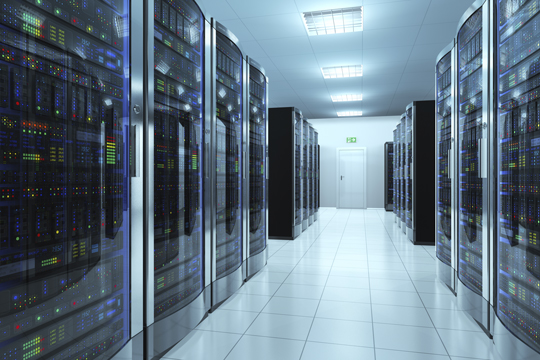Moderne Rechenzentren sind technologisch außerordentlich komplex und ihr sicherer und effizienter Betrieb erfordert eine kontinuierliche, sorgfältige Überwachung und Verwaltung.
Die Aufrechterhaltung der richtigen Temperatur gehört zu den wichtigsten Aufgaben von Rechenzentrumsmanagern. Steigen Temperatur und Luftfeuchtigkeit im Rechenzentrum zu stark an, kann sich Kondenswasser bilden und die darin befindlichen Maschinen beschädigen. Dies kann zu massiven Schäden und Störungen führen und muss daher unbedingt vermieden werden. Glücklicherweise stehen verschiedene Technologien zur Verfügung, die dabei helfen, die Temperatur im Rechenzentrum auf dem richtigen Niveau zu halten.
Es gibt zahlreiche Möglichkeiten, ein Rechenzentrum zu kühlen. Bei der indirekten Luftkühlung wird Außenluft verwendet. Durch den Einsatz eines Luft-Luft-Wärmetauschers wird die Außenluft in einem separaten Kreislauf gehalten und sorgt so für Kühlung, ohne in den Serverraum zu gelangen.
Indirekte Kühlmethoden haben den Vorteil, dass die Innenluft nicht mit Schadstoffen und Feuchtigkeit aus der Außenluft verunreinigt wird. Ein Wärmetauscher trennt die beiden Luftströme und leitet die Wärme von innen nach außen. Dadurch kommt es zu keiner Vermischung von Außen- und Innenluft.
Befindet sich das Rechenzentrum in einem Bereich mit konstant niedrigen Temperaturen, ist eine Trockenkühlung in der Regel ausreichend. Durch das Besprühen der Umgebungsluftseite des Wärmetauschers mit Wasser wird jedoch ein Verdunstungseffekt erzielt, der zu einer niedrigeren Raumlufttemperatur führt. Diese Methode wird als indirekte Verdunstungskühlung (IEC) bezeichnet.
IEC eignet sich ideal für warmes, trockenes Klima und bietet hervorragendes Kühlpotenzial bei niedrigen Betriebs- und Anschaffungskosten. Im Sommer sinkt die Umgebungstemperatur typischerweise um 6–8 °C (10–15 °F). IEC ermöglicht Energieeinsparungen von bis zu 281 TP3T im Vergleich zu konventioneller Freikühlung und 521 TP3T im Vergleich zu luftgekühlten Freikühlungsalternativen.
Für die Verdunstungskühlung ist ein Plattenwärmetauscher erforderlich, der hohe Effizienz mit geringem Druckabfall verbindet, zuverlässigen Korrosionsschutz bietet und zuverlässig wasserdicht ist. Kreuzstromwärmetauscher erfüllen all diese Anforderungen und bieten gleichzeitig eine hervorragende Kühlleistung.
Unsere Kreuzstromwärmetauscher, insbesondere mit Verdunstungskühltechnologie, bieten eine effiziente, kostengünstige und umweltfreundliche Alternative zu herkömmlichen Kühlmethoden.
